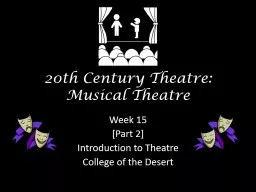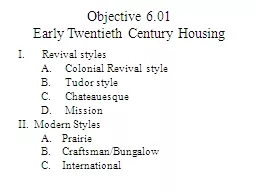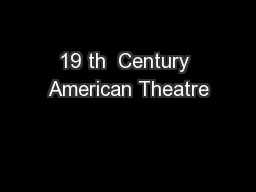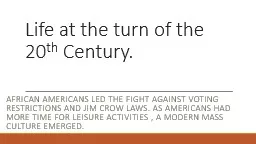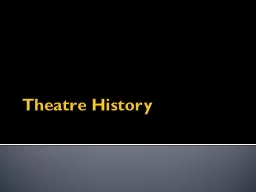PPT-20th Century Theatre: Musical Theatre
Author : min-jolicoeur | Published Date : 2018-10-22
Week 15 Part 1 Introduction to Theatre College of the Desert Realism Realism in the last half of the 19thcentury began as an experiment to make theater more useful
Presentation Embed Code
Download Presentation
Download Presentation The PPT/PDF document "20th Century Theatre: Musical Theatre" is the property of its rightful owner. Permission is granted to download and print the materials on this website for personal, non-commercial use only, and to display it on your personal computer provided you do not modify the materials and that you retain all copyright notices contained in the materials. By downloading content from our website, you accept the terms of this agreement.
20th Century Theatre: Musical Theatre: Transcript
Download Rules Of Document
"20th Century Theatre: Musical Theatre"The content belongs to its owner. You may download and print it for personal use, without modification, and keep all copyright notices. By downloading, you agree to these terms.
Related Documents

